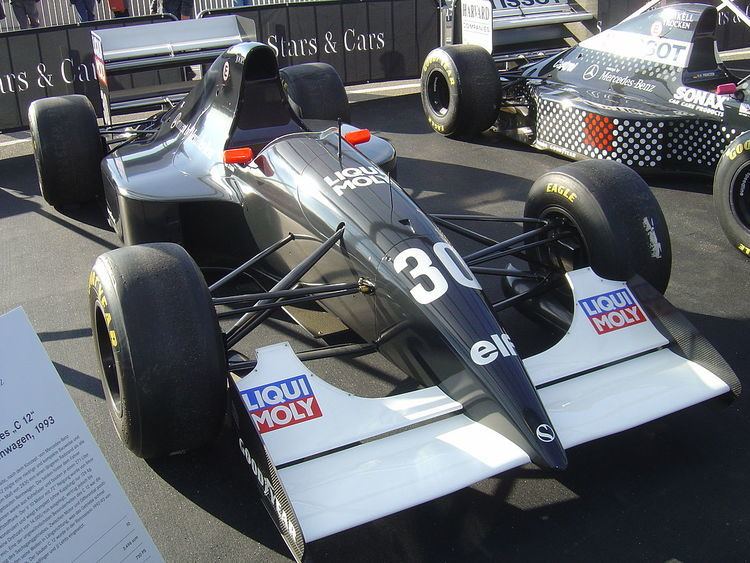Constructor Sauber | ||
 | ||
Designer(s) Harvey PostlethwaiteLeo Ress Suspension (front) Double wishbones, pushrod | ||
The Sauber C12 was the car with which the Sauber Formula One team made its FIA Formula One World Championship debut in 1993. Its design was led by Leo Ress. Power was provided by a Sauber-branded 3.5-litre 72deg. V10 built by Ilmor in partnership with Mercedes. The Sauber branding was given the prominence of "Concept by Mercedes-Benz" decals on the engine cowling and the two parties' close relationship from their World Sportscar Championship program. Indeed, the engines were re-branded in 1994 to reflect the partnership.
Contents
Drivers
Karl Wendlinger was re-united with his former WSC team in preparation for its Grand Prix debut. He already had two seasons of Formula One experience, having made his debut in the 1991 Japanese Grand Prix with Leyton House. JJ Lehto (Jyrki Järvilehto) had started 38 Grands Prix (not including failures to qualify) between 1989 and 1992. Lehto contributed to a promising start with a 5th-place finish in the South African GP at Kyalami and improved on that with a 4th place classification at Imola, home of the San Marino GP, despite an engine problem.[1]
Finishing record
The C12 had a somewhat mixed record with a total of 12 DNFs due to mechanical failure, including seven engine failures (not including Imola, where Lehto was classified as a finisher). Driver-related incidents accounted for six more DNFs.
The C12 achieved six points finishes and eight non-scoring finishes from 32 starts.
Constructors' World Championship
The C12 achieved a points total of 12 and 7th place in the Constructors' World Championship standings. It was replaced at the start of the 1994 season by the Sauber C13.
Complete Formula One results
(key) (results in bold indicate pole position)
